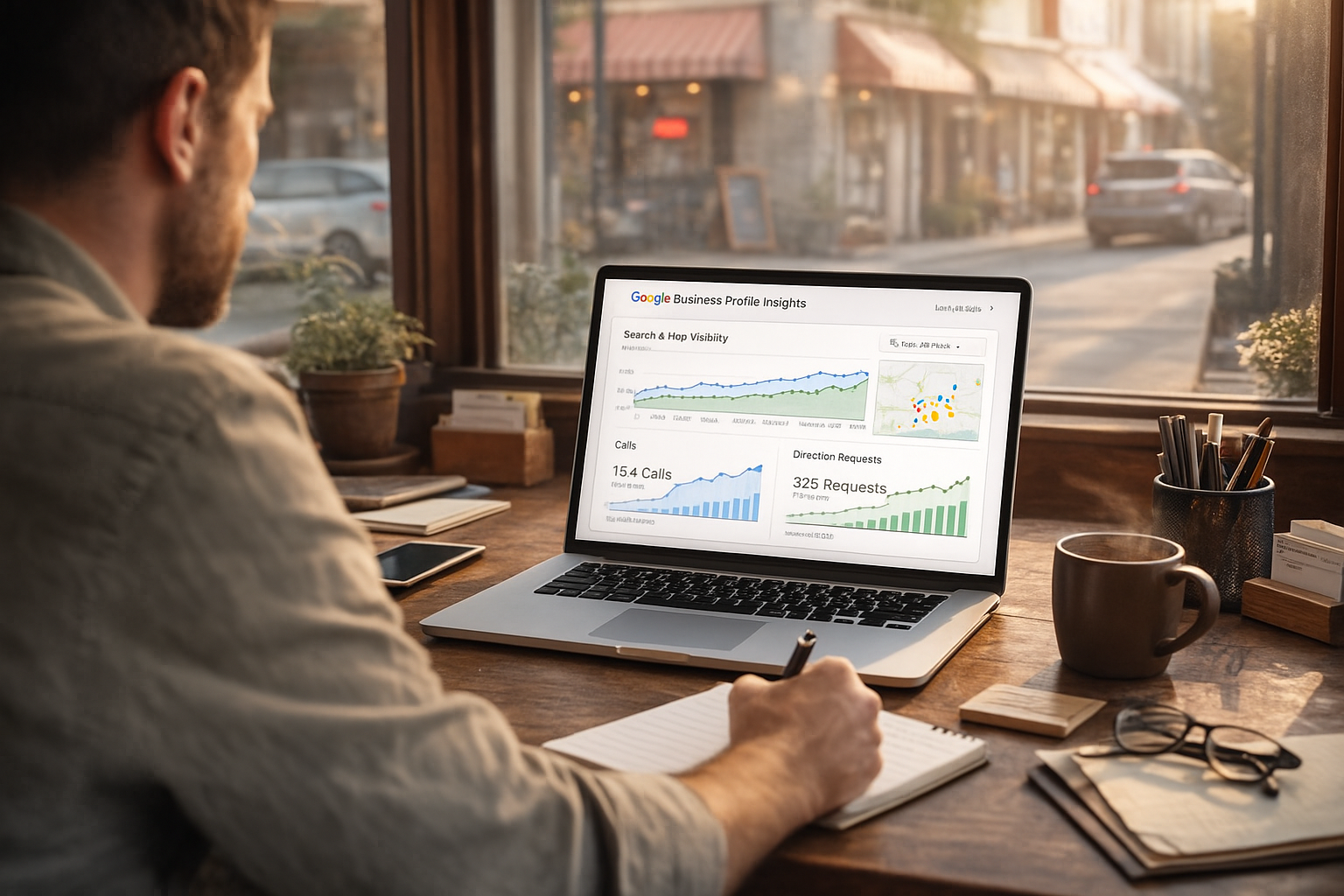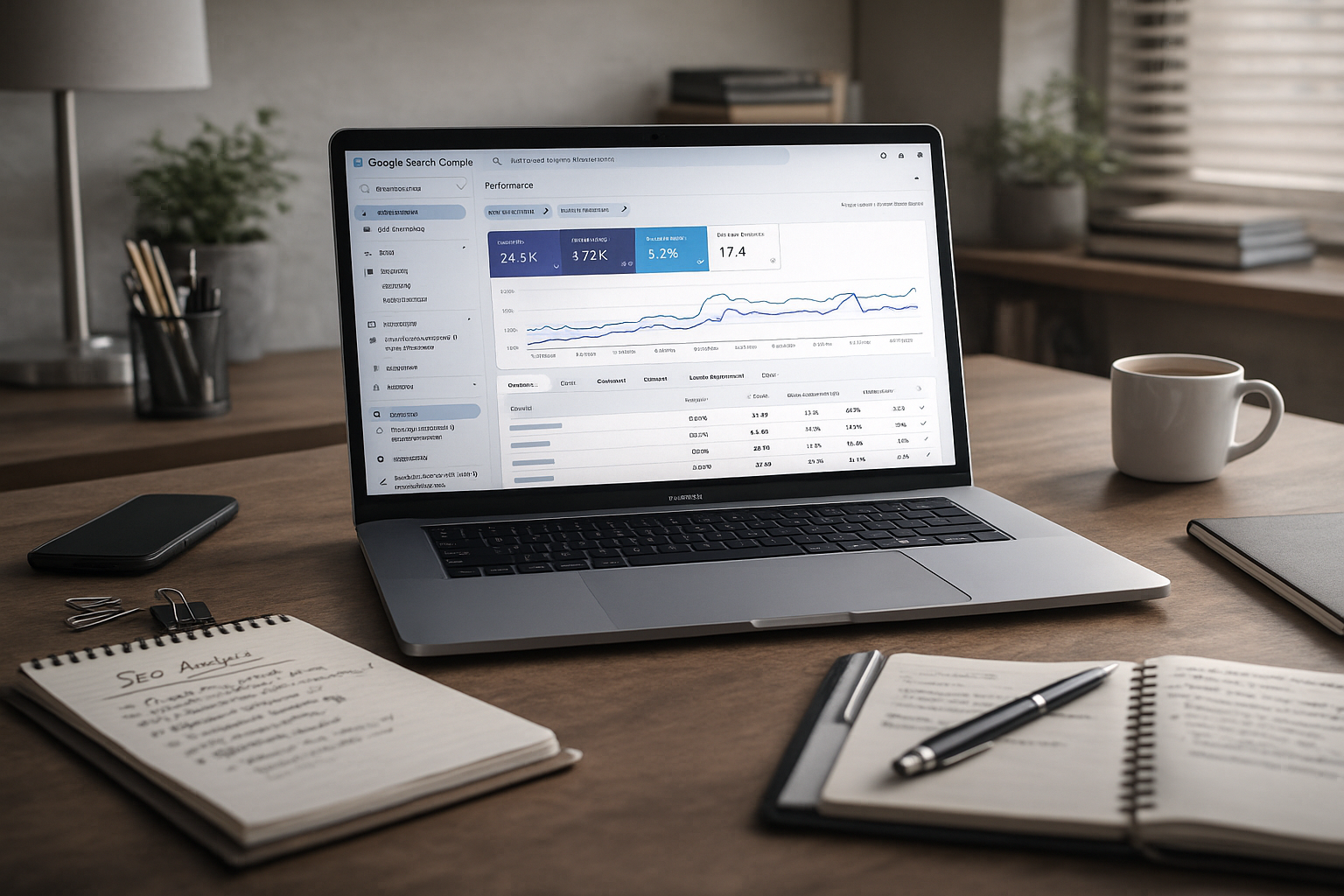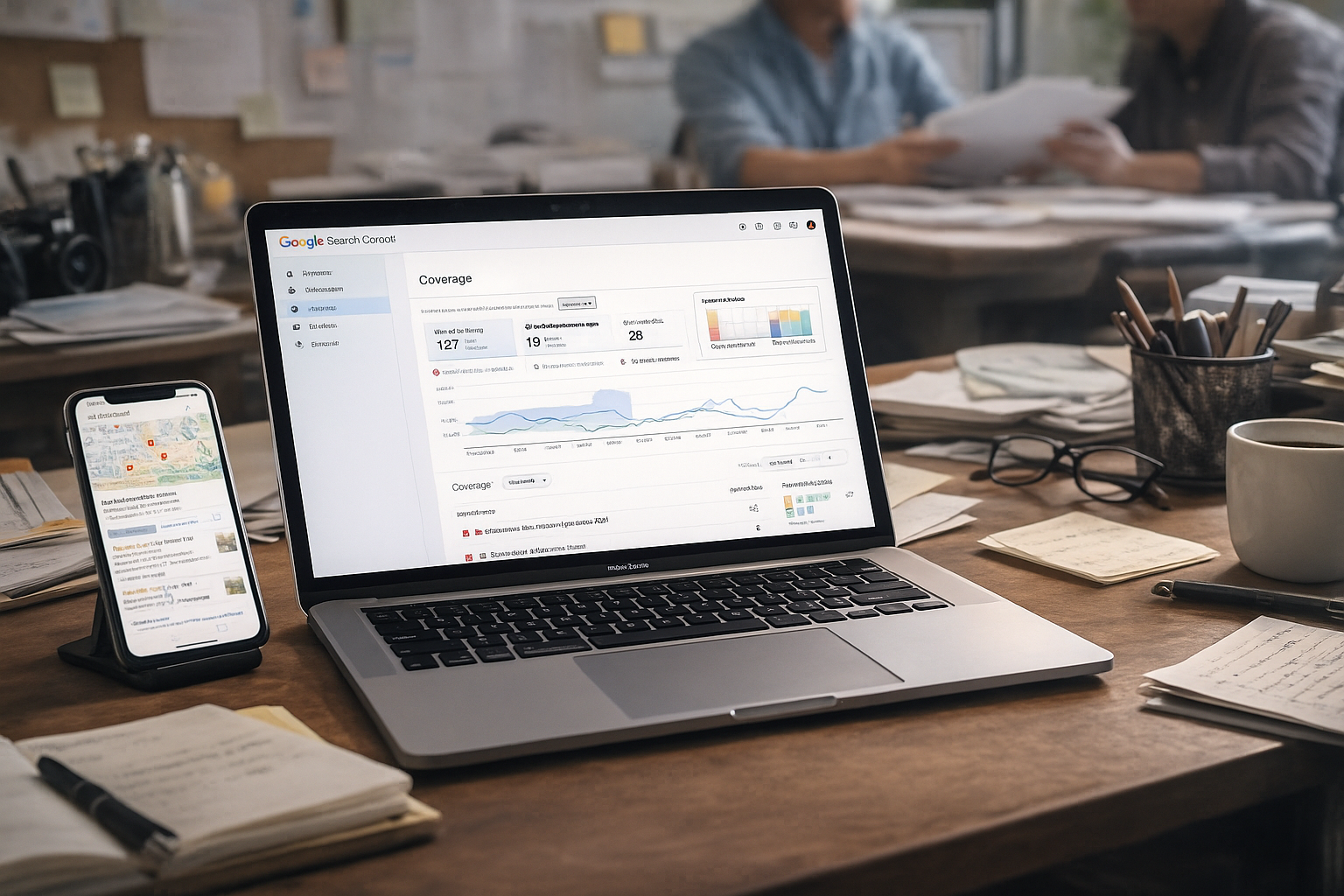How do I optimize my Google Business Profile (formerly GMB)?
Optimizing a Google Business Profile (formerly
Google My Business) is crucial for increasing local visibility, earning customer trust, and driving real leads for a business. The following detailed guide explains how to elevate every aspect of a Google Business Profile, covering actionable strategies, advanced tips, and expert recommendations for 2025 and beyond.
Understand Why Your Google Business Profile Matters
A well-optimized Google Business Profile (GBP) acts as your business’s digital storefront on Google Search and Maps, shaping first impressions for local customers. With searchers increasingly trusting local listings, a fully completed GBP can make your business 2.7 times more likely to be seen as reputable, and up to 70% more likely to receive in-person visits. Local search results dominate purchase decisions, and being visible here means earning more phone calls, website visits, and requests for directions.
Consistent optimization also supports
higher rankings in Google’s “local pack” and Maps, ensuring that when potential clients in your area search for a solution you provide, they find you first. Businesses invested in their online reputation and local discoverability consistently experience improved customer loyalty, greater engagement, and measurable growth.
Claim and Verify Your Profile for Trust
The first step to optimization is claiming and verifying your Google Business Profile. Only verified businesses are eligible for full visibility in local search results, so this step is non-negotiable.
- Claim: Visit the Google Business Profile Manager and search for your business. If a profile exists, claim ownership; if not, create a new listing with your accurate details.
- Verify: Google typically verifies businesses through a postcard mailed to your location, though phone and email are sometimes options. Follow Google’s guidance diligently—unverified listings receive less exposure and fewer features.
- Monitor Verification: Occasionally, Google will re-verify businesses for security. Set up administrative alerts to avoid lapses in visibility that can derail your local SEO performance.
A claimed and verified GBP also simplifies responding to reviews, posting updates, and correcting inaccurate business details.
Fill Out Every Detail: Name, Address, Phone, and More
Accuracy and completeness fuel discovery and trust. Ensure every profile section—no matter how small—is fully filled out and always updated as circumstances change.
- Business Name: Use your real-world, customer-facing business name. Avoid stuffing keywords into the name field, as this violates Google’s guidelines and can result in profile suspension.
- Address and Service Area: Enter your physical address exactly as used elsewhere online. For service-based businesses, list areas covered.
- Phone Number: List a local, direct line—ideally matching your website and other directories.
- Website: Link directly to a relevant page, such as your homepage or booking page.
- Business Hours: Keep hours current, including holidays and special hours. Google requires accuracy here, and mismatches can frustrate visitors.
- Attributes: Mark relevant attributes (e.g., “women-owned,” wheelchair accessible, free Wi-Fi). These can influence which searches your business appears in.
- Other Essentials: Add details on parking, amenities, payment types, and accessibility features where applicable. Each filled detail makes your GBP more valuable and increases conversion opportunities.
Consistency is vital—every listing across the web (including your website, third-party directories, and industry platforms) should feature matching contact information, business name, and address (known as NAP consistency).
Choose the Perfect Categories and Subcategories
Your chosen business categories tell Google what your business does and determine which searches will surface your profile. Selecting the best primary and secondary categories is a top-ranking factor.
- Primary Category: Pick the category that best represents your business’s core activity (e.g., “Plumber,” “Digital Marketing Agency”).
- Secondary Categories: Add additional relevant categories to capture your full service offering, such as “Drainage Service” or “Web Hosting Provider.” Check your competitors’ listings for inspiration, but only select categories that truly fit.
- Keep Up To Date: Google regularly updates its list of available categories. Revisit your selection periodically to ensure you aren’t missing new relevant options.
Proper categorization is about accuracy—never try to manipulate categories for more reach if they don’t accurately describe your business. Mismatched categories reduce conversion and can get your profile flagged.
Write a Keyword-Rich, Customer-Focused Business Description
Your business description is your pitch to potential customers—and Google. Use this space (up to 750 characters) to concisely describe your business, emphasizing specialties, values, and unique benefits.
- Strategic Keywords: Incorporate 2–3 primary local keywords naturally. For example, a roofing company based in Phoenix might mention “roof replacement in Phoenix AZ.”
- Avoid Spam: Avoid repeating keywords or using irrelevant phrases. Keyword stuffing can reduce trust and even lead to penalties.
- Show Value: Highlight what makes the business unique (e.g., “family-owned,” “24/7 emergency support,” “free consultations”).
- Location Matters: Mention your target location or service area organically in the copy.
- Stay Professional: No promotional offers or all-caps shouting; adhere to Google’s guidelines.
Review and refresh your description periodically to reflect new services or changes in your business model.
Upload High-Quality Photos and Videos Regularly
Photos and videos are proven to increase engagement, profile views, and customer actions. Google reports businesses with robust photo galleries receive more requests for directions, calls, and website clicks than those with few or no images.
- Types to Add:
- Exterior/interior images showcasing your space
- Product or service “in-action” shots
- Team photos (personalized, friendly images build trust)
- Video tours or process demonstrations (under 30 seconds for best performance)
- Frequency: Upload new content at least monthly. This signals active engagement to Google and keeps your profile fresh.
- Requirements: Use clear, high-resolution images. Include geotagging for local relevance where possible.
- Optimization: Name image files with descriptive, keyword-relevant terms (e.g., “digital-marketing-agency-getphound-pa.jpg”).
Avoid stock photos and outdated images—a genuine visual representation wins attention and trust.
Cultivate and Respond to Customer Reviews
Reviews are among the top local ranking factors and play a crucial role in customer decision-making. Encourage, monitor, and professionally respond to both praise and criticism.
- How to Get More Reviews:
- Request feedback after sales or successful services via email, SMS, or printed cards with a link/QR code.
- Share your review link on social media or in your email signature.
- Best Practices for Responses:
- Reply promptly and courteously to all reviews.
- Thank positive reviewers and personalize your response (“We’re thrilled you loved our new menu!”).
- Address negative feedback with professionalism, acknowledging concerns and suggesting solutions.
- Impact of Reviews:
- Google considers both review volume and recency. Encourage a steady stream of new reviews.
- Keywords in reviews (the customer’s language) may influence search relevance.
- Flag and dispute fake or spammy reviews through Google’s Help system.
Responding to reviews demonstrates excellent customer service and may help convert searchers into loyal clients.
Post Regular Updates, Offers, and Events
GBP “Posts” are a powerful way to broadcast news, offers, events, and business updates that appear directly in your profile and local search results.
- Types of Posts:
- Announcements (“Now Open Sundays!”)
- Promotions (“20% off SEO audits this month”)
- Events (“Join our free marketing webinar”)
- Product or service launches
- Frequency: Post at least once per week. Older posts disappear from prominent Google placement after seven days, but remain visible on the profile tab.
- Tips:
- Keep text concise (150–300 words)
- Use compelling, original images
- Include a clear call to action (CTA)
- Highlight your unique selling points
Google Posts enhance user engagement and show Google your profile is actively managed, which can improve rankings.
Leverage Google Q&A to Educate and Convert
The Q&A section allows anyone to ask and answer questions about your business—making it a critical channel for both SEO and customer service.
- Monitor Constantly: Set up email alerts to catch new questions and answer them before competitors or the public provide incorrect or misleading responses.
- Seed the Section: Add common questions and answer them using your business’s Google account. Use keywords and phrases customers naturally search for.
- Show Expertise: Offer helpful, thorough responses rather than one-word answers. This demonstrates authority and boosts trust.
Q&A is often overlooked, but it’s a powerful branding and conversion tool for proactive businesses.
Showcase Products, Services, and Attributes
Google allows you to feature specific products, services, and attributes, customizing your profile to show precisely what’s available and relevant to searchers.
- Products and Services:
- Add descriptions, prices, and images for individual products or services.
- Regularly update these listings with new offerings or current promotions.
- Categories should match your main listings for relevancy.
- Attributes:
- Highlight special features (e.g., LGBTQ+ friendly, wheelchair access, online appointments).
- Google surfaces profiles with relevant attributes for users searching with those filters.
Detailed service and product listings can directly influence local “justifications”—callout texts Google displays within maps/search to justify why the business matches the user’s intent.
Keep Hours, Location, and Information Updated
Customers (and Google) rely on GBP for accurate, up-to-the-minute information, especially about hours and accessibility.
- Regularly Review: Check your profile each month for out-of-date details, changing business models, or shifting opening times.
- Special Hours: Update for holidays, events, or emergencies to avoid disappointing customers.
- COVID-19 Notices: If applicable, use “health & safety” attributes and posts to announce changes or procedures.
- Service Area Changes: Adjust if expanding/contracting your area.
Profiles with frequent, accurate updates signal to Google that the business is active and trustworthy, favoring higher rankings.
Maintain NAP Consistency Across the Web
NAP consistency (Name, Address, Phone number) is a backbone of local
SEO. Any difference between your GBP and external listings (such as Yelp,
Facebook, or industry directories) can confuse Google and tank your ranking.
- Audit Regularly: Search for your business online and note variations across platforms. Correct mismatches immediately.
- Use Tools: Consider citation management tools or services to find and fix inconsistencies at scale.
- Keep Ownership: Try to claim and control your listings on as many platforms as possible to expedite corrections.
Consistency builds Google’s confidence in your business’s legitimacy and strengthens all local rankings.
Measure Performance and Refine Your Strategy
Optimization is an ongoing process. Google Business Profile offers “Insights” to help track success and learn more about how customers interact with your listing.
- Track Key Metrics:
- Searches and views
- Website clicks, calls, requests for directions
- Post engagement, photo views, and Q&A activity
- Compare with Goals: Are more customers calling? Has foot traffic increased?
- Experiment and Adjust: Test different post types, promotions, and keywords in your description. Remove or revise strategies that don’t generate results.
Ongoing measurement lets you respond quickly to trends, stay ahead of competitors, and ensure an optimal return on your Google Business Profile investment.
Frequently Asked Questions
Why is Google Business Profile important for small businesses?
A well-optimized GBP is one of the highest-ROI channels for local lead generation, increasing credibility, and making your business visible where customers are searching.
How do I get my business to show up on Google Maps?
Claim and verify your profile, fill out every detail, and engage regularly with customers to increase your local relevance.
How can I encourage more customer reviews?
Ask after positive interactions, send follow-up messages, make it easy with direct links, and thank reviewers for their feedback.
What should I do if my information changes?
Update your GBP and every other relevant online listing immediately to maintain NAP consistency and avoid confusing customers or Google.
Do Google Posts really help with ranking?
Active posting signals to Google that your business is real and engaged, which can positively influence both visibility and customer interaction.
By following these actionable strategies and committing to active profile management, businesses set themselves up for increased leads, higher conversions, and long-term growth in local search results.












